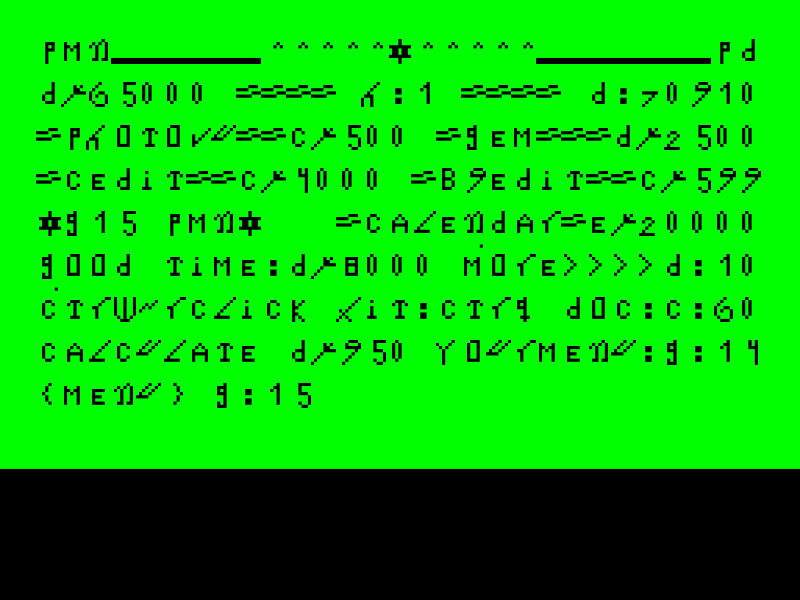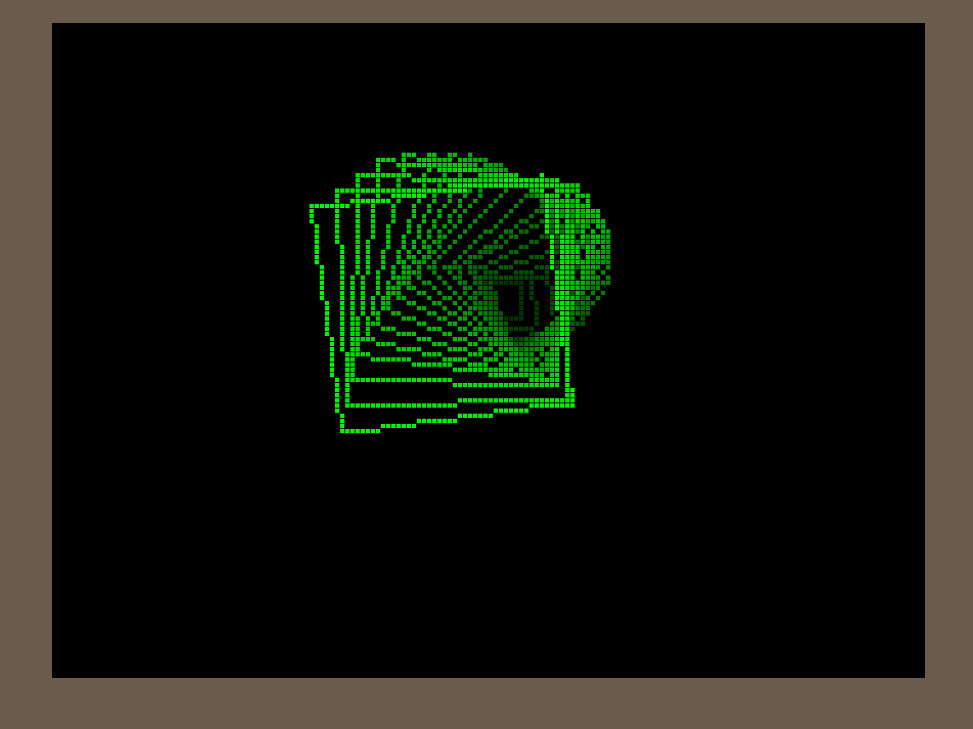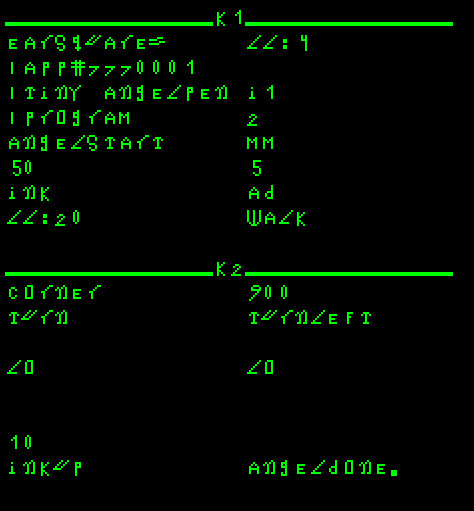


This is genifun.com/g15pmn: where key questions about G15 PMN are answered G15 PMN To go the main G15 PMN app page click here: norskesites.org/fic3/fic3inf3.htm To suggest new themes that should be dealt with here, send it to: srw at avenuege dot com Please include this phrase in the header: "A G15 PMN question". GENERAL USAGE Q: What is G15 PMN? A: It is a programming language and a way to organize programs and data on a Personal Computer, and, from a practical viewpoint, an ever-growing set of applications for all sorts of activities involving texts, numbers, monochrome photos and graphical images, also databases of such. This personal computer can be a physical personal computer which has been designed specificially to run G15 PMN (as an operating system), or it can be a virtual personal computer which is run on top of such as a Microsoft Windows PC or a PC with a suitable alternative platform, in particular Linux. But even if we talk about a 'virtual' personal computer it is performing flawlessly and fast in this way, and so it is often practical to think of it as chiefly a programming language, where you can run and, if you like, make applications of various kinds, games, educational, practical, financial, technological, and even scientific. (The word "app" in the context of G15 PMN is simply an abbreviation for "applicaton"-- short or small, with one or with several programs, with or without data, or with just data.) Q: Why is G15 PMN so green? A: The idea we have of a Personal Computer is that it is a clearly limited machine that can be of great help to human beings in many ways--but not constructed with an eye to fully dominate people's lives. The way we think about a Personal Computer, or a PC, is that it should help to organize data-- written data, photos, graphics--and it should be an instrument with which we can sharpen our minds and have some stimulating entertainment with as well. For a Personal Computer to be of value in human working and living, it should not be constructed--whether hardware or software-- so as to be addictive {though of course I'm aware that in many tech businesses, they are aiming for exactly that--as addictive as possible machinery, in order to satisfy a profit motive that has nothing of genuine ethics and quality motivation in it}. PCs, then, are devices for graphics-- chiefly images--and text--and for thinking in terms of making programs. {There are studies that show that the brain is more active when subjected to more moderate input; and a succession of images is a more moderate input than videos, allowing more personal imagination to take place--also in between the showing of each image--a pause which is reduced to a psychological nothing when a video is shown at 25 or more images pr sec.} As we see it, these images should typically be harmoniously stimulating to the human brain, mind, soul without imitating reality so much that there is the constant added pressure for the mind to sort of where reality begins and where the personal computer ends. A PC should be a more limited prospect. The PC that is limited is easier to control, and it is easier to feel that one is in charge of one's own life when the PC isn't programmed with an aspiration of overtaking people's life. The lack of sound and the lack of color variation in the typical definition of the G15 PMN is, as we see, a great advantage in the long run, because you will feel a peace when you work with the G15 PC because you know what it is all about and where it is and where the rest of reality is. And the PC has a keyboard and a mouse pointer device and doesn't utilize any such thing as camera (unless it is specifically set up to perform a technical task such as control a robot). {In addition, you may look up the references at the start of the following main page; these indicate that computer bright green is the most suitable working-color: here.) Q: Is not this a rather obscure approach, which hardly can have any much appeal? A: It has appeal for those who are very attentive to the drug-like aspect of the multimedia/multicolor/multi-input-output type of computerized gadgets that has so overwhelmed Earth. The addictive and drug-like aspect of such multi-computers have an impact on the human brain and mind--an impact towards creating a sluggish type of outlook on life in general; wholly different from the radiant and brilliant intelligence stimulated by even small sessions with the G15 approach to PC. Q: Is this proven? A: Nothing scientific is "proven", let's bear that in mind. At best, we can talk of there being "some/much evidence in support of such and such a theory", but this doesn't exclude support of alternative theories. What I am saying is that it is seems reasonable and likely and I know of no fact to contradict it and many facts and also some studies that support something along the lines I suggest. In short, scientifically, I should say: "there is little evidence as yet due to lack of research so far". At a suitable time, we will undertake as objective research as practically possible and weigh the findings in a balanced way. Q: Why are there glimpses of fashion models and so on during the startup of B9edit editor? A: Many places in the G15 PMN set of core applications is there an appeal to the wholeness of mind by means also of playful glimpses of healthy anatomy. It is one of the most important findings, I think, in work psychology that the brain requires this type of feedback regularly to function holistically. Q: Well, is there anything at all that one can do on G15 PMN that one cannot get done without G15 PMN? A: Yes, but the difference makes most sense to creative people who are wanting some such tool as a non-multi-media Personal Computer as a kind of companion in a process going over a long time and involving much private work. To such a person, G15 PMN offers a whole different tone, if that's the word I want. Over a year or more, the total output of the work of this creative person can be enhanced in terms of both quality and efficiency, for a myriad reasons that have to do with the bold and coherent design decisions inherent in the G15 PMN platform and its many apps. Let me also say something of importance to such a creative individual: the platform is made to last and endure and keep on existing, from the very first elementary instruction put into the real or virtual G15 CPU and all the way through the pixels used in its artistic fonts. It is a platform that is entirely unchanged and stable throughout its myriad programs--it has a proven coherence. There is no change of the core. There are no updates. There are no development fees. There are no registration processes. There is no price tag on the language and everything about the PMN compiler and its apps are all available in source. There are no complicated principles behind the scenes for organizing the data--it is all straight-forward, like a 'stupid' but lovely machine, lovely because you can depend on its stability. Every time you switch it on it behaves exactly identical. Every decade it is the same, for we will always make sure that the most available personal computer types can perform all of G15 PMN--and in a way that is exactly identical, requiring no re-learning, no change of program versions, no recompilation or anything like that. That is to say: every bit of thing you learn about it this year you can use throughout your life, nothing less. This was the plan and its author had enough competence and background with earlier coding work of this nature to carry it through to the letter. In this most important sense of the word "success", it is a success. Q: How can I get it? A: Do you have a PC? If not, get a PC. Be sure it has Windows or Linux, and that, if it is a laptop, that you get an inexpensive or expensive USB keyboard with twelve function keys on it, and also a USB mouse. (You can use Bluetooth and so on, but it is part of the approach of G15 PMN to stick to wires unless it is absolutely necessary to use radio waves). Be sure that the PC doesn't have smaller screen than 1024 x 768: most normal laptops have resolution of 1366 x 768 or a multiple of that again, so it shouldn't be a problem. Then go into the link to the G15 PMN app page that is at top of this page, and unzip the package, and figure out how to start the program inside that package. In the case of the Windows package, that's a question of running a .bat file. If that poses any problem for you, there are tech people all over the place who can help you start that .bat file and create an icon on the screen that does it neatly by a double-click on it. That should get you going. Then you may want to fetch another package, perhaps again with some assistance from these tech guys, in order to do some extra things with your G15 PMN. And yes, start with getting a game like TexasStars. That will teach you how to fetch and start up any app--they are all similar in how you start them up, and that's a glorious way to start, I think. And good luck!ADVANCED USAGE Q: Why is G15 PMN programming using cards? A: The human mind groups things, and groups groups, and groups the groups of the groups. This is seen again and again in research as to how the mind handles things. To handle a card with just a few programming statements is usually far easier than handling a file with thousands of them. Then you group the cards mentally. Q: Why is G15 PMN programming having a two- column approach? A: Well, first of all, why a column? Because we want pause to look at what you just instructed the PC to do. Or what somebody else instructed it to do when that app was made. This is easier when there is space on the line. Then, most interesting programming and certainly G15 PMN uses stacks of data. These are visually far better dealt with as columns than rows. It is more intuitive, you put something on top of something else, then you pick it off there then that something else appears again. And why two columns? But we have two brain-halves, don't we. It is a dialogue of thought, to program. When you get used to it, nothing beats it. Q: Why aren't there objects there? A: That's a long story dealt with in several texts around on the platform. The shortest possible version is that the set of concepts surrounding the idea of "object" in programming is a mess and it doesn't map the world of real objects or of concepts very well at all; and that messy map has very little to do with how a Personal Computer is constructed. The G15 PMN programmer is doing something that we call "first-hand programming", in which each thing done is specified and if nothing is specified, nothing is done and that's that. Everything that can be done by a socalled "object-oriented program" can be done better, easier, faster and more vividly without using object-orientation at all. Add to that the fact that in G15 PMN we put a big premium on relating to the interactor {note that we don't say "user", which is a description of a human being that is affirming a restrictive view} of the program directly rather than making "background programs". It fits the commercial industry very well to have "objects" in the sense of "floating background programs" which once in a while "pop up" with questions that point in the direction of some payment, but the programs tend to get better by the algorithmic approach. In addition, we have created a strong concept called "warps", which is a standardization of the concept of "pointer", which is that which implicitly is used by objects anyway. Q: Who designed the language? A: I did (S.R. Weber, alias Aristo Tacoma, and for half a dozen other aliases--all public, of course--see links somewhere else). But it is true that I have many times coded, recoded, uncoded and messed up Forth interpreters, besides having played around with representatives of every language form there is for too many years to mention. Q: Why doesn't the language relate to the Internet? A: Internet is fine and great and good and lovely but it is something different than the process of relating to real reality and doing good thinking there. I call the former "online" and the latter "realline" (or real line). G15 PMN isn't as much online as real line. (But we are working on a physical form of G15 computers with their own networking.) Q: Can it control robots? A: Yes, projects are concrete there but at the moment of writing this we have some more robot-like constructive game apps to make before we do a virtual robot there, that in turn will tell us how most simply to set up the part of G15 PMN called "FCM" to serve the robotic hardware we have got--and then gradually expand from there. This is done without trying to do things via that which big companies and superficial thinkers and researchers call "AI". G15 PMN is wedded, deeply, to a noble anti-AI approach, in which the human mind is never to be simulated, only stimulated; and in which robots are to be chunky, stupid and reliable in their well-defined tasks in well-defined domains. This is, seen on a millenia type of perspective the only form of robots that humanity ultimately will really accept, for the other are just grown insects however cutely they are dressed up. Only people in denial of their own depths of awareness, attention and soul can get enthusiastic about the concept of "artificial intelligence"--which in any case is an over-hyped way to describe what is simply a question of algorithms. Q: Why should one bother to learn G15 PMN as a proramming language when other languages give one more control over gadgets that run the world? A: What is the point of running the world if you don't run yourself, your own mind? See what becomes of the people who are more friends with Java and Swift and suchlike than with human beings. These terrible structures may be very profitable, and if so, and if that's the only way you can earn a living, by all means do so rather than wither; but don't for a moment imagine that these horrible structures nurture the wholeness of your mind. Q: But G15 PMN does nurture the wholeness of your mind, when you program it? If so, why? A: Why is the flower delicious to look at, when it is? I can suggest this and that and fifteen or a hundred aspects that all work in this direction. The first-handedness of this programming language--that you are directly relating to the numbers in it, rather than handling things in a second-hand or third-hand way. The elegant, almost poetic tightness of the core. The interactivity of the language, that you can work with the functions, one by one, on command line, as if they were living things, rather than having to grapple with a sort of "negotiating process" with a vast compiler that is again controlled by a vast, hierarchical "project management application". That you are yourself in charge and have the freedom to change anything from day 1 and so, by this freedom, get a sense of responsibility. That only compact, elegant functions are built into the core rather than things made on an idea to satisfy a lot of half-thought conventions. And that it is done after a great deal of philosophical work with the varieties of interpretation of quantum and relativity physics, by someone not wedded to a reductionistic take on the human mind. As I said earlier on, I plan to undertake more research work, psychological studies including also some elegant light EEG studies, with as much "control groups" and so on that we can contrive, so that the findings will tell their own tale to anyone who bothers to read them. First and foremost, though, I suggest that you give G15 PMN some time over a couple of months, then, quietly, over many days, weigh your personal feelings and thoughts about it and work it out. I think you may find that it contributes to your inner harmony and your efficiency in a range of areas. To go to the main G15 PMN app page click here: norskesites.org/fic3/fic3inf3.htm 
